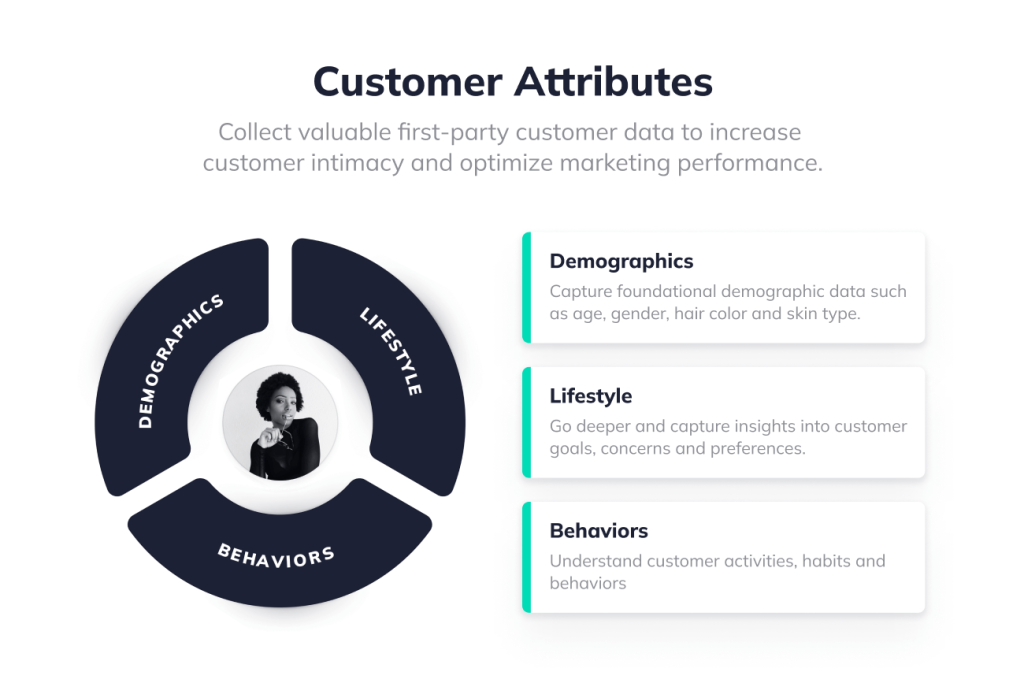
- Uncategorized
Why Zero Party Data Is Crucial For Successful Advertising Post iOS 14.5
Matt Goodman | Feb 15, 2022
Feb 15, 2022 | 7 minute read

Matt Goodman
Co-founder, CEO
Jack Paxton, Founder of Top Growth Marketing
Feb 15th 2022
If you’re at all interested in the marketing landscape, you must have noticed the sharply increased focus on privacy standards in the last few years — and the commotion came to a head last year when Apple rolled out iOS update 14.5.
14.5 proved to be challenging for digital marketers, to say the least. But it also shed light on just how indispensable zero-party data (0PD or ZPD) would become to defeat dwindling ROAS and rising ad costs.
Here’s how the “new normal” of privacy standards will play out and why zero-party data should be a priority going forward.
Just in case you’ve missed it, Apple made some critical changes in its devices’ interaction with user privacy protection.
While the entirety of those changes is outside the scope of this article, here’s the sentence that has the biggest impact on marketing efforts:
“With iOS 14.5, iPadOS 14.5, and tvOS 14.5 and later, you’re required to ask users for their permission to track them across apps and websites owned by other companies.”
In other words, users have to opt-in to have their activity tracked rather than opt-out — which was the case previously.
Subsequent data from analysts shows that only about 6% of users choose to let apps track their activity via Apple’s Identifier for Advertisers in the US. That removes a lot of data that marketers relied on to serve targeted experiences to users.
Specifically, well over 100 million Apple users became blank slates in the blink of an eye.
iOS 14.5 isn’t the end of third-party data, and there are undoubtedly many more variables at play.
However, many marketers note it as the death knell of passively-tracked advertising and a herald of the consent-based future of advertising.
Additionally, Apple made even more ardent strides in the direction of user privacy with iOS update 15. As a result, there’s every reason to believe this is a serious and permanent decision.
The consequences of tightening privacy standards for Apple users were predictable.
Advertising to Apple users became more expensive, and the average return on ad spend in the U.S. increased as a result.
There has been endless speculation, strategizing, and theory-crafting about dealing with these changes. There have even been marketing conferences dedicated mainly to finding a way forward in light of those changes.
And, to be fair, many people brought up some excellent points and came up with great ideas. However, they all seemed to focus on plugging holes and patching up a leaky ship that has sailed its course.
The way we see it, the only sustainable way to evolve is to embrace consent-based advertising.
In short, it’s time to take zero-party data seriously and make it a core part of your marketing strategy.
In a nutshell, zero-party data refers to personal data that customers give you willingly.
It’s the type of thing you’d expect a customer to tell you if they walked into your store to help them find what they’re looking for.
In contrast, third-party data comes from aggregators and trackers that many customers have started to distrust. It’s fair to say they’ve earned that distrust by frequently doing their level best to make it unclear how and when they’re collecting data.
It’s also an alternative to first-party data, which you can collect passively from your customers’ activity.
Collecting zero-party data often comes in the form of quizzes, surveys, and similar transparent data-collection techniques.
The shortcomings of asking customers to surrender data should be obvious to anyone trying to accomplish that. Namely, customers will always wonder: “What’s in it for me?”
But, in a very real sense, we marketers are slowly being backed into a corner.
On the one hand, customers demand personalization at every step of their buyer journey. And on the other hand, they’re increasingly suspicious about how their data is collected and used.
Zero-party data is an elegant solution to that tension since it presents customers with the option to get as much personalization as they’re willing to provide data for.
Some of the benefits of this approach include:
And, perhaps most importantly, you’ll be able to serve individualized experiences to your customers aligned with their expectations.
But, here’s the kicker: you can do so without giving them an eerie feeling when personalization goes too far.
Most people aren’t comfortable with the feeling that they’re being surveilled. And if you can provide personalization without making them feel like you’re overstepping, you’ve got a recipe for success.
Here’s the part you were probably waiting for! Let’s dive into some of our favorite ways to collect zero-party data.
One of the most efficient ways we’ve found is to encourage users to share just a little more than they otherwise would when joining your email list.
Don’t go overboard, though. Remember that every step you add to the process increases friction and makes it a little less likely to collect that email address.
However, if you strike the right tone and only ask for information your customers expect you to need, it’s an excellent tactic.
Another opportunity to collect valuable zero-party data is when asking for reviews.
If someone is willing to give you a review for a product, they’re reasonably likely to also share a little about themselves.
If you’re a Shopify user, this is one way in which apps like Okendo can make your life easier.
Apps can ask customers to include data about themselves in the course of a review. You can then seamlessly integrate that data into your marketing strategy.

Much of the time, customers are all too happy to complete a quiz or survey if you use the right incentive.
And, if you’re clever about how you word it, completing the quiz can be its own reward (remember how viral BuzzFeed quizzes used to be?).
This kind of data collection can be your bread and butter if you’re marketing for a DTC brand. You can usually recommend exactly the product features your customer might like with very little data.
Hopefully, this article has made it clear that zero-party data will be an increasingly important part of your marketing strategy in the near future.
We’re already rounding the corner of iOS 15, and there are no signs that the privacy push will slow down.
The good news is that zero-party data represents an important opportunity if you play your cards right. So, the sooner you start, the better-positioned you will be to surpass your competitors!
Book a demo today to learn more!

Top Growth Marketing is a full-service growth agency offering PPC services empowered with innovative and evolving strategies to help clients remain profitable within tight constraints. We pride ourselves on the use of data-driven insights to assist clients in making informed decisions at every step of the customer acquisition process. Since our inception, we’ve had the privilege of directing over 200 million dollars of profitable marketing spend for our clients and we’re continually growing.
Related articles
Ready to learn more?